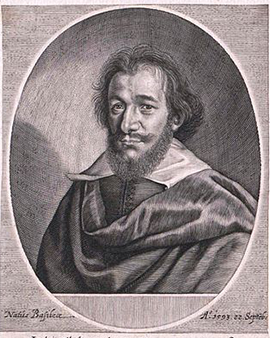In the heart of the European Renaissance, on September 22, 1593, Matthäus Merian the Elder was born in Basel. His exceptional talents as an engraver and publisher brought him fame and recognition and made him a proud member of the prestigious Merian family of Basel. His exquisite work continues to shape our fine art print collection today. His depiction of the topography of Germany is considered his masterpiece and reveals his skills in cartography and chronicle publishing. Merian, son of the sawyer and councilor Walther Merian, was an enthusiastic student in his youth. After attending high school, he devoted himself to the art of drawing, engraving, and etching under the tutelage of the Zurich engraver Friedrich Meyer. His educational years took him through Strasbourg, Nancy and Paris from 1610 to 1615, where he further honed his skills under the supervision of Friedrich Brentel and Jacques Callot. During this time, he produced the impressive city map of Basel. Merian traveled through cities such as Augsburg and Stuttgart, eventually landing in Frankfurt am Main and Oppenheim in 1616, where he worked for the publisher and engraver Johann Theodor de Bry.
His work for de Bry, who ran an engraving business in Oppenheim and a publishing house in Frankfurt, prepared Merian for his own entrepreneurial journey. In 1617 he married Maria Magdalena de Bry, the daughter of his employer, and during this time he also worked for the engraver and publisher Eberhard Kieser. Merian moved around between Oppenheim and the Electoral Palatinate capital of Heidelberg in the following years, striving to establish his own professional existence. In an attempt to attract potential financiers, he produced his large panorama of Heidelberg. However, his ambitious plans were frustrated by the outbreak of the Thirty Years' War in 1618 and the political failure of Frederick V, Elector of the Palatinate. In the years that followed, Merian returned to his native city of Basel, where he set up his own business. After the death of his father-in-law in 1623, he took over his father's publishing house in Frankfurt. His entrepreneurial talent was further enhanced when he acquired the citizenship of Frankfurt in 1626 and took Wenzel Hollar, an aspiring artist, into his workshop in 1627.
The period of time when Merian lived in Frankfurt was also the period of creation of his most famous works. He published the Historical Chronicle of the World by Johann Ludwig Gottfried and began work on the Theatrum Europaeum, which depicted the events of the Thirty Years' War. Beginning in 1642, the volumes of Topographia Germaniae were published, a work that Merian unfortunately did not live to see completed.
An essential element of Merian's life's work are his city views, which are still valued today as valuable historical testimonies. They are often among the oldest depictions of specific places and show the cityscape before its destruction by the numerous wars of the last four centuries. In addition to his artistic work, Merian was intensively concerned with religious issues. He emphasized the importance of being personally moved by the Spirit of God and anchored this conviction in his coat of arms and publishing signet. The motto "Pietas contenta lucratur" (roughly: "Piety pays off") was integrated with a stork as the heraldic animal.
Merian's impressive career ended, however, after a long illness on June 19, 1650, in Langenschwalbach near Wiesbaden. He left a large inheritance to his two sons, Matthäus and Caspar, who continued his publishing company under the name Merian Erben and continued to publish his works. Today, we are proud to present Merian's extraordinary works in our fine art print collection. His detailed city views and topographical maps enrich the collections of art lovers worldwide and are a testament to his relentless pursuit of excellence and profound cultural influences.
×





.jpg)
.jpg)
.jpg)
.jpg)
.jpg)
.jpg)
.jpg)
.jpg)
.jpg)
.jpg)
.jpg)
.jpg)
_and_Cardinal_Richelieu_(1575-1642)_in_Front_of_the_So_-_(MeisterDrucke-77234).jpg)
_and_Cardinal_Richelieu_(1575-1642)_in_Front_of_the_So_-_(MeisterDrucke-77234).jpg)
.jpg)
.jpg)
.jpg)
.jpg)
.jpg)
.jpg)
.jpg)
.jpg)
.jpg)
.jpg)
.jpg)
.jpg)
_-_(MeisterDrucke-891163).jpg)
_-_(MeisterDrucke-891163).jpg)
.jpg)
.jpg)
.jpg)
.jpg)
.jpg)
.jpg)
.jpg)
.jpg)
.jpg)
.jpg)
.jpg)
.jpg)
.jpg)
.jpg)
.jpg)
.jpg)
.jpg)
.jpg)
.jpg)
.jpg)
.jpg)
.jpg)
.jpg)
.jpg)






